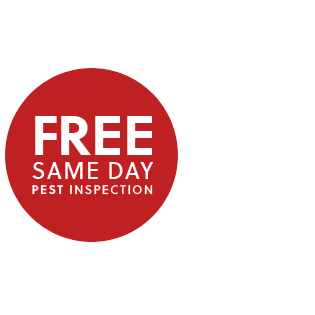Back to School Pest Control Tips
All school environments – from kindergarten classrooms to university campuses – face unique challenges when it comes to pests. Pests including flies, cockroaches, ants, spiders, stinging insects and rodents can cause more headaches than a pop math quiz.
With nearly six million students enrolled in public schools across California there is bound to be a package of cookies or granola bar left in a desk or locker overnight. This seemingly harmless (and all too common occurrence) can lead to pests taking advantage of the situation and helping themselves to a meal.
Pests can also arrive and depart school unnoticed each day inside backpacks or gym bags. Keeping school environments pest-free is no easy task and takes cooperation between staff, students and parents.
What Attracts Pests to Schools
Clark, your neighborly pest, termite and rodent control expert, says schools are a magnet for pests for several reasons:
- There is a constant flow of people and deliveries coming in and out of school buildings creating opportunities for pests to gain access.
- School buildings offer numerous areas where pests can hide undetected.
- Cafeterias and dining halls where food is delivered, stored, prepared and served are bound to produce crumbs, spills, leftovers and garbage that can attract a variety of pests including rodents, flies and cockroaches.
- Student lockers, desks, faculty lounges and dorm rooms are areas where ants, cockroaches and rodents can feed on a leftover peanut butter and jelly sandwich or an open bag of potato chips.
Why Pests Need to Fail
Maintaining a pest-free environment in schools is important for multiple reasons starting with creating a healthy environment focused on learning, not pests.
Health Risks - Pests can carry and transmit diseases, posing significant health risks to students and staff. For example, rodents can spread hantavirus and salmonella, while cockroaches can trigger asthma and allergies.
Food Contamination - Pests can contaminate food and food preparation areas, leading to potential foodborne illnesses. This is particularly concerning in school cafeterias and kitchens.
Allergies and Asthma - Some pests, such as cockroaches and dust mites, can exacerbate allergies and asthma symptoms, affecting students' health and ability to concentrate. Allergic reactions to stinging insect bites is another concern.
Distraction - The presence of pests can be distracting for students and staff, negatively impacting the learning environment.
Property Damage - Pests like rodents and termites can cause significant damage to school buildings and infrastructure, leading to costly repairs and maintenance.
School Pest Prevention Tips
To maintain a healthy, pest-free learning environment throughout the school year, Clark offers the following tips:
Keep Personal Belongings Clean - Cleaning out lunch boxes regularly, and inspecting backpacks and gym bags for signs of pests will help reduce conditions that attract pests.
Store Food Properly - Use airtight containers for snacks and lunches and keep food items sealed and stored in designated areas. Do not leave food or drinks in lockers or desks overnight. Pests, especially rodents, will be attracted to the food smells.
Avoid Clutter - Declutter desks, lockers, and dorm rooms to eliminate hiding spots for pests. Regularly clean and vacuum living and study areas.
Dispose of Garbage Promptly - Take out the garbage or recycling containers daily and dispose of them properly in dumpsters with lids.
Pest Control from Clark Pest Control
If you are having problems with pests in schools, contact the experts at Clark Pest Control. Call or text Clark at 800/WE-NEED-YOU or send an e-mail at clarkcares@clarkpest.com for more information.
Until next time, the pest management professionals at Clark Pest Control thank you for helping keep unwanted pests out of your home and yard.


